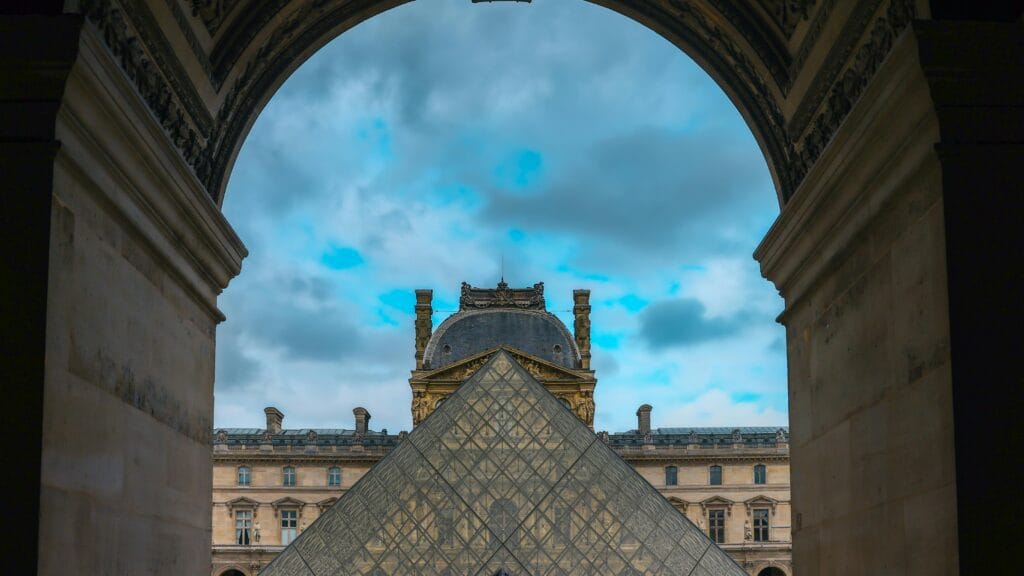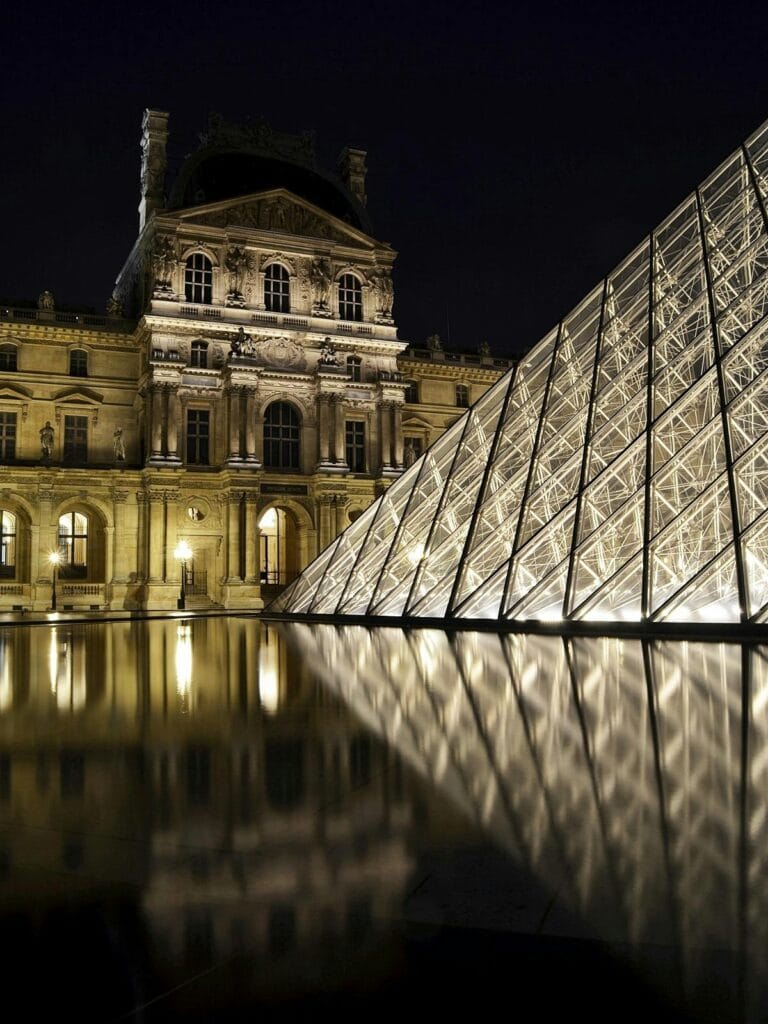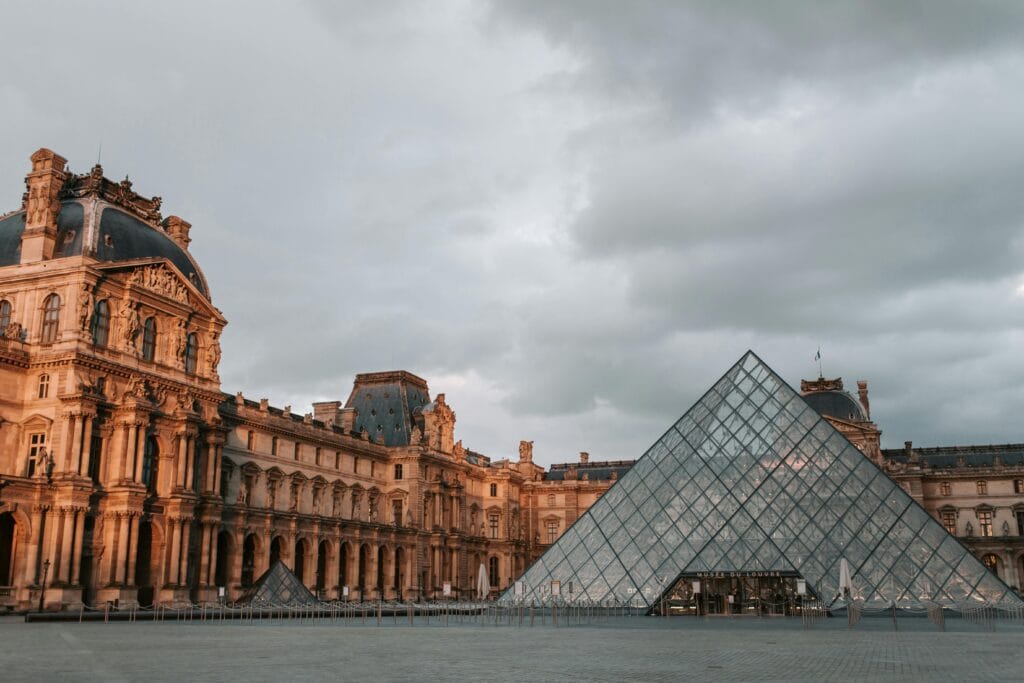The Louvre Museum is not just the most visited museum in the world. It is a treasure trove of history, art, and secrets waiting to be discovered. Whether you are a passionate art lover or a traveler seeking to explore the heart of Paris, The Louvre is an experience like no other. At Visit Every Corner, we are dedicated to bringing you the most fascinating insights about iconic landmarks. Which ensures that you discover places in a way you never imagined. Get ready to uncover 10 amazing facts about the Louvre Museum that will leave you in awe!
Quick Overview
- Location: Paris, France
- Best Time to Visit: Early mornings or late afternoons on weekdays
- Unique Features: Largest art museum in the world, home to the Mona Lisa, rich historical background
1. The Louvre Museum Was Originally a Fortress
Before becoming a grand museum, the Louvre Museum was a medieval fortress built in the late 12th century by King Philip II. The remnants of this fortress can still be seen in the museum’s basement, offering a glimpse into Paris’s medieval past. It was only in the 16th century that King Francis I transformed it into a royal palace, paving the way for its future as a museum.
The museum’s evolution from a military stronghold to a symbol of artistic excellence speaks volumes about the transformation of Paris over the centuries. When walking through the underground medieval section, visitors can see the original foundations and walls that once protected the city from invasions.

2. Home to the World’s Most Famous Painting
The Louvre Museum houses the iconic Mona Lisa, painted by Leonardo da Vinci. What makes this painting so mesmerizing? It’s her enigmatic smile, the intricate brushwork, and the layers of mystery surrounding its history. The Mona Lisa attracts millions of visitors every year, making it the most famous and protected artwork in the world.
Security around the Mona Lisa is unparalleled. The painting is encased in bulletproof glass, and guards monitor the room 24/7. Over the years, it has been the target of multiple theft and vandalism attempts, but thanks to rigorous security, it remains untouched and intact.
3. It’s the Largest Louvre Museum on Earth
Covering over 782,000 square feet, the Louvre Museum is the largest art museum in existence. It is impossible to see everything in a single visit. If you spent 30 seconds on each artwork, it would take you over 100 days to see them all!
With such an enormous collection, the museum is divided into several sections, including Egyptian Antiquities, Near Eastern Antiquities, Greek and Roman Art, Islamic Art, Decorative Arts, Paintings, Prints and Drawings, and Sculptures. Each section tells a unique story of human civilization and artistic expression.

4. The Louvre Museum Was Once a Royal Residence
Before Versailles became the primary home of French royalty, the Louvre Museum was the official residence of French kings. The opulent ceilings and grand halls still hold traces of its regal past, making it a place where history and art blend seamlessly.
The transformation of the Louvre into a museum was initiated after the French Revolution, when art collections were opened to the public. The grandeur of the former palace is evident in the Napoleon III Apartments, which give visitors a glimpse into the lavish lifestyle of 19th-century French aristocracy.
5. The Glass Pyramid Was Controversial
In 1989, architect I. M. Pei designed the modern glass pyramid entrance to the Louvre Museum. Though controversial at first, this architectural marvel has become a symbol of the museum. The pyramid stands at 71 feet tall and is made of 673 glass panes, allowing natural light to flood the museum’s entrance.
Critics initially argued that the pyramid’s modern design clashed with the classical architecture of the Louvre. However, today it is one of the most recognizable landmarks of Paris, attracting millions of visitors who marvel at its bold yet elegant design.

6. The Louvre Museum‘s Collection Holds Over 480,000 Pieces
The Louvre Museum boasts a staggering collection of over 480,000 artworks, though only around 35,000 are displayed at a given time. The collection spans prehistory to the 21st century, covering Egyptian relics, Greek sculptures, and Renaissance masterpieces.
Among its prized possessions are the Venus de Milo, The Winged Victory of Samothrace, and Liberty Leading the People. The sheer diversity of its collection ensures that there is something for everyone, whether you are a fan of ancient civilizations or contemporary art.
7. It Was Looted During World War II
During World War II, the Nazis seized thousands of artworks from the Louvre Museum. However, the French curators had anticipated the invasion and secretly moved many of the most valuable pieces, including the Mona Lisa, to hidden locations. After the war, many stolen artifacts were recovered and returned.
The dedication of the museum staff in protecting these masterpieces is legendary. Some curators risked their lives to transport and hide valuable artworks in chateaus and monasteries across France, ensuring that these cultural treasures survived the war.

8. The Louvre Museum Has Secret Underground Tunnels
Beneath the museum lies a network of secret tunnels. Some were used historically as escape routes, while others serve as passageways for museum staff. These underground pathways add an element of mystery to the Louvre Museum.
One such tunnel connects the museum to the Seine River, potentially providing a quick escape route during times of war. These hidden corridors remain closed to the public, adding to the allure and secrecy of the world’s most famous museum.
9. It Has Its Own Ghost Stories
The Louvre Museum is rumored to be haunted by a ghost known as “Belphegor.” Many staff members have reported eerie encounters, particularly near the Egyptian antiquities section. Whether you believe in ghosts or not, the museum’s long history certainly fuels intriguing tales!
Some visitors claim to hear whispers and footsteps in empty halls, while others report sudden temperature drops in certain galleries. Whether fact or fiction, these ghost stories add to the museum’s mystique.

10. You Can Visit for Free on Certain Days
The Louvre Museum offers free admission on the first Friday of every month after 6 PM and on Bastille Day (July 14th). This allows thousands of people to experience the wonders of the museum without spending a dime.
For budget travelers, planning a visit on these days is a great way to explore one of the world’s greatest cultural institutions without any cost.
Final Thoughts
The Louvre Museum is more than just an art gallery—it’s a symbol of history, culture, and human creativity. Whether you are admiring the Mona Lisa, exploring hidden tunnels, or uncovering ancient artifacts, each visit is an unforgettable journey through time. At Visit Every Corner, we ensure you discover the world’s greatest places in the most fascinating ways. Have you visited the Louvre? Share your experience with us!


